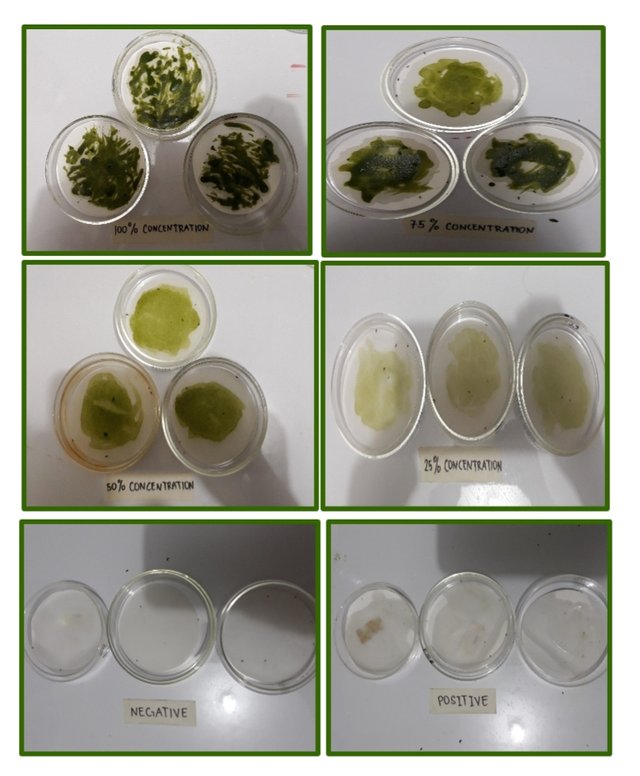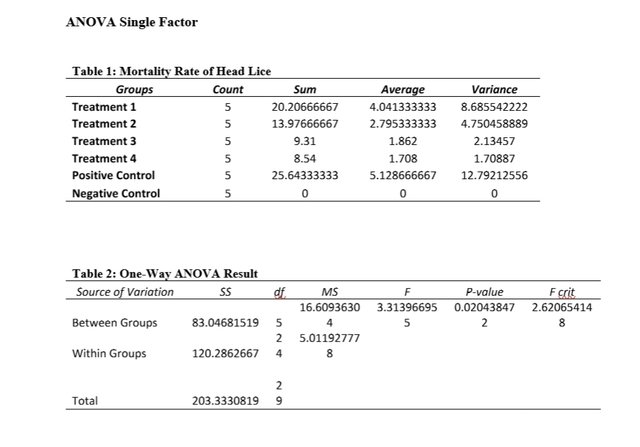IN VITRO PEDICULICIDAL EFFICACY OF Azadirachta indica LEAF EXTRACT AGAINST Pediculus humanus capitis (HEAD LICE)||An Applied Science Category Team Project Regional Entry
I know its been a while since my last active days here @steemit but I believe it does not stop me to write again something worth sharing for.
I am very grateful to share this achievement we have together with my students of Mactan National High School as a participant of the regional level in the Science Fair 2018. The said event caters different contest including Science Investigatory Project, both life and applied category, Science Expo, Robotics, Science Quiz Bowl and Strategic Intervention Materials for teacher category. I believe this kind of activity helps us to be more inclined and become more motivated to love science more.

This coming November 8 to 10 will be the most awaited date we long to come because finally, we will be participating for the first time in a regional level of Science fair. By the way, we belong to region 7, meaning to say all the participants of the provinces of Central Visayas will gather in this event bringing with them honor and pride from their respective schools.
With this, I am very proud to share to you what is all about our team's science investigatory project entry for this year.
Our study is entitled "IN VITRO PEDICULICIDAL EFFICACY OF Azadirachta indica LEAF EXTRACT AGAINST Pediculus humanus capitis (HEAD LICE)."
Image Source
In vitro refers to the process performed in a controlled environment, like the culture medium. In our study, we use the petri dish with a filter paper inside it as the controlled environment. Azadirachta indica is a common tropical tree found abundant in the locality of Mactan. A leaf extract was obtained in this plant and is used as pediculicide agent againts head lice. Pediculicide is the term used to kill head lice.

Here is the abstract of our study.
Head lice are tiny, wingless parasitic insect that lives among human hairs and feeds on tiny amounts of blood drawn from the scalp. Head lice can cause pediculosis capitis, an infection of the head hair and scalp because of lice infestation. There are various commercial preparations available for the treatment of head lice but some parents are wary of using patent pediculicide products and prefer to use natural alternatives. Hence, in an attempt to provide an alternative treatment to pediculosis capitis caused by head lice, this study aimed to investigate the pediculicidal potential of Azadirachta indica crude leaf extract against head lice that cause pediculosis capitis. In vitro pediculicidal screening using filter-paper bioassay was done on the crude leaf extract. Head lice obtained from an infested head were collected using fine-tooth comb and then exposed to different treatments in the next 3 hours. Six treatments were prepared: 100%, 75%, 50% and 25% concentrations of crude leaf extract, permethrin (positive control) and distilled water (negative control). Three trials per treatment were conducted. The mortality rate per treatment was measured and recorded as the pediculicidal activity. Data obtained suggested that the crude leaf extract of Azadirachta indica has pediculicidal potential. The mortality rate of head lice when exposed to 100% crude leaf extract reveals that it can kill the head lice. Therefore, the crude leaf extract of Azadirachta indica has pediculicidal potential and can be used as an alternative pediculicide treatment for head lice.
Crude leaf extracts of Azadirachta indica was investigated for its pediculicidal potential against Pediculus humanus capitis. Azadirachta indica leaves were used since it has been known to contain bioactive compunds, azadirachtin, which is known to have insecticidal activity against head lice. Crude leaf extracts were obtained using mortar and pestle, and four concentrations were made out of the obtained stock solution. The different concentrations of crude leaf extract were then subjected to pediculicidal screening using filter-paper bioassay. The result showed that crude leaf extract of Azadirachta indica exhibits pediculicidal activity against head lice that cause pediculosis capitis. The findings revealed that at high concentration, the crude leaf extract of Azadirachta indica is as effective as the positive control which shows mortality rate after 3 hrs. The obtained data also reflected that even at low concentration, the crude leaf extract of the plant samples display mortality activity on head lice.
The exposure of head lice to different concentrations of crude leaf extract revealed that these head lice are highly sensitive to the bioactive compounds found in the leaf extract since mortality rate was exhibited after 3 hours of exposure. The greatest mortality was observed in treatment 1 (100% concentration) and positive control (permethrin). The displayed mortality rate in all concentrations of crude leaf extracts confirmed that the leaf extract of Azadirachta indica has pediculicidal potential against head lice. The findings also indicated that high concentration (100% concentration) of Azadirachta indica crude leaf extract had resulted to greater number of mortalities which is comparable to the positive control.
The table below shows the p value equivalent to 0.02 which means our result is significant.

The pediculicidal activity exhibited by Azadirachta indica crude leaf extract in this study can be used as a scientific basis in using Azadirachta indica crude leaf extract as an alternative topical treatment against head lice. Though the result of the study showed positive effect, proper processing is still needed to ensure its appropriateness as an alternative pediculicide treatment.
In future studies, the researchers recommend a more intensive investigation on the pediculicidal effects of azadirachtin, the bioactive compounds found in the leaves plant samples. A phytochemical screening is suggested to identify other bioactive compounds found in Azadirachta indica leaves which contributed to its pediculicidal action. Moreover, field trials are also needed to evaluate the effectiveness of the crude leaf extract as an alternative topical treatment for head lice.
I hope this will not be the end of our journey. Help us to encourage more to proceed with our study. Thank you
glad to see your back..😊😊 let's try if @curie and @ocd will appreciate your work.. 😁😁
Congratulations! This post has been upvoted from the communal account, @minnowsupport, by bien from the Minnow Support Project. It's a witness project run by aggroed, ausbitbank, teamsteem, someguy123, neoxian, followbtcnews, and netuoso. The goal is to help Steemit grow by supporting Minnows. Please find us at the Peace, Abundance, and Liberty Network (PALnet) Discord Channel. It's a completely public and open space to all members of the Steemit community who voluntarily choose to be there.
If you would like to delegate to the Minnow Support Project you can do so by clicking on the following links: 50SP, 100SP, 250SP, 500SP, 1000SP, 5000SP.
Be sure to leave at least 50SP undelegated on your account.
Nice investigatory work, unsa name sa Bisaya name ana nga dahon? Interested me, para sa mga Apo Kong kutuon...thanks
Posted using Partiko Android
hi maam @jurich60 kung wala ko masayop maam "bagarnga" ang term pero common gd ani niya maam is "neem tree"
Congratulations @karyah1001! You have completed the following achievement on the Steem blockchain and have been rewarded with new badge(s) :
Click here to view your Board of Honor
If you no longer want to receive notifications, reply to this comment with the word
STOP